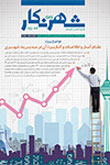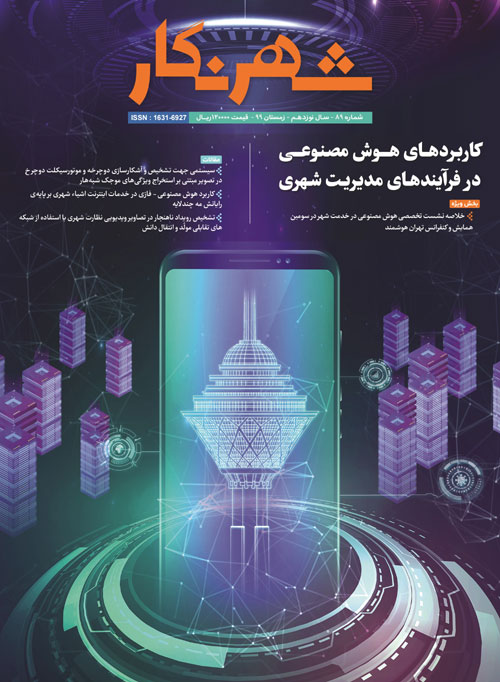فهرست مطالب

دو ماهنامه شهرنگار
پیاپی 75-76 (اسفند 1394 و اردیبهشت 1395)
- تاریخ انتشار: 1395/02/25
- تعداد عناوین: 11
- یادداشت
-
صفحه 3
- بخش ویژه: نظام آمار و اطلاعات
-
صفحه 6
-
آثار تغییر نگرش مدیران از رویکرد برناه ریزی به رویکرد آینده پژوهی / شکل گیری آینده ای مطلوب با تاکید بر نقش آمار و مهندسی اطلاعاتصفحه 69
- نگاهی دیگر
- رویدادهای علم یو اجرایی
-
صفحه 112
-
صفحه 118
-
Page 31NSaina omwoadhaayms dmiffaerde nyt aurrbi٭a٭n executive units and trustee of urban management have made city management into a non-cohesive problem. These units are using the generated data like an information islands only for their own purposes. Information engineering process helps integrated management to be established at the level of urban management by sharing information and knowledge synergy to solve urban problems. In this article we have tried to place information engineering in urban management and its usage has been analyzed in a SWOT table. Various studies sporadically from concepts and methodology up to usage of data engineering in various fields have been targeted and accumulated in this research.Keywords: Information Engineering (IE), Urban Management, methodology
-
Page 56Information technology is now known as the main factor of worldwide development. The vast amount of information has led urban managers to use city dashboards as management and measurable tools for displaying urban information. The purpose of this article is to introduce city dashboard and its role in the management information system required for local citizens. The current research was based on descriptive and analytical methods. The library materials and documents were used. The results show that in many cities urban management, data integration, people notifications, services to citizens were improved by utilizing city dashboards. However, in Iran there is not a desired progress for city dashboard due to lack of inter agency cooperation, inadequate infrastructures, not defined concept of city dashboard for citizens. Accordingly, it is necessary for city managers to approach their strategic planning by using city dashboards because of its great features.Keywords: City information dashboard, information management, citizen
-
Page 87Demographic approaches have a profound impact on the welfare of communities. In view of the far-reaching consequences of any adopted approach, this paper investigates the future population changes in Tehran until 2051. Assuming the adoption of each distinct approach (decreasing birth rate, constant birth rate and increasing birth rate) and the resulting outcome of each. Thus the total population of the city, the share of the three age groups (below 15, between 15 and 64 and over 64), the share of inactive population (below 15 and over 64) and the dependency burden, resulting from each approach are calculated, compared and analyzed. Though with any of the three approaches, the share of the active population is decreased and that of the inactive increased, the increase is highest for the increasing birth rate approach with the inevitable consequence of fast growing heavier dependency burden.


